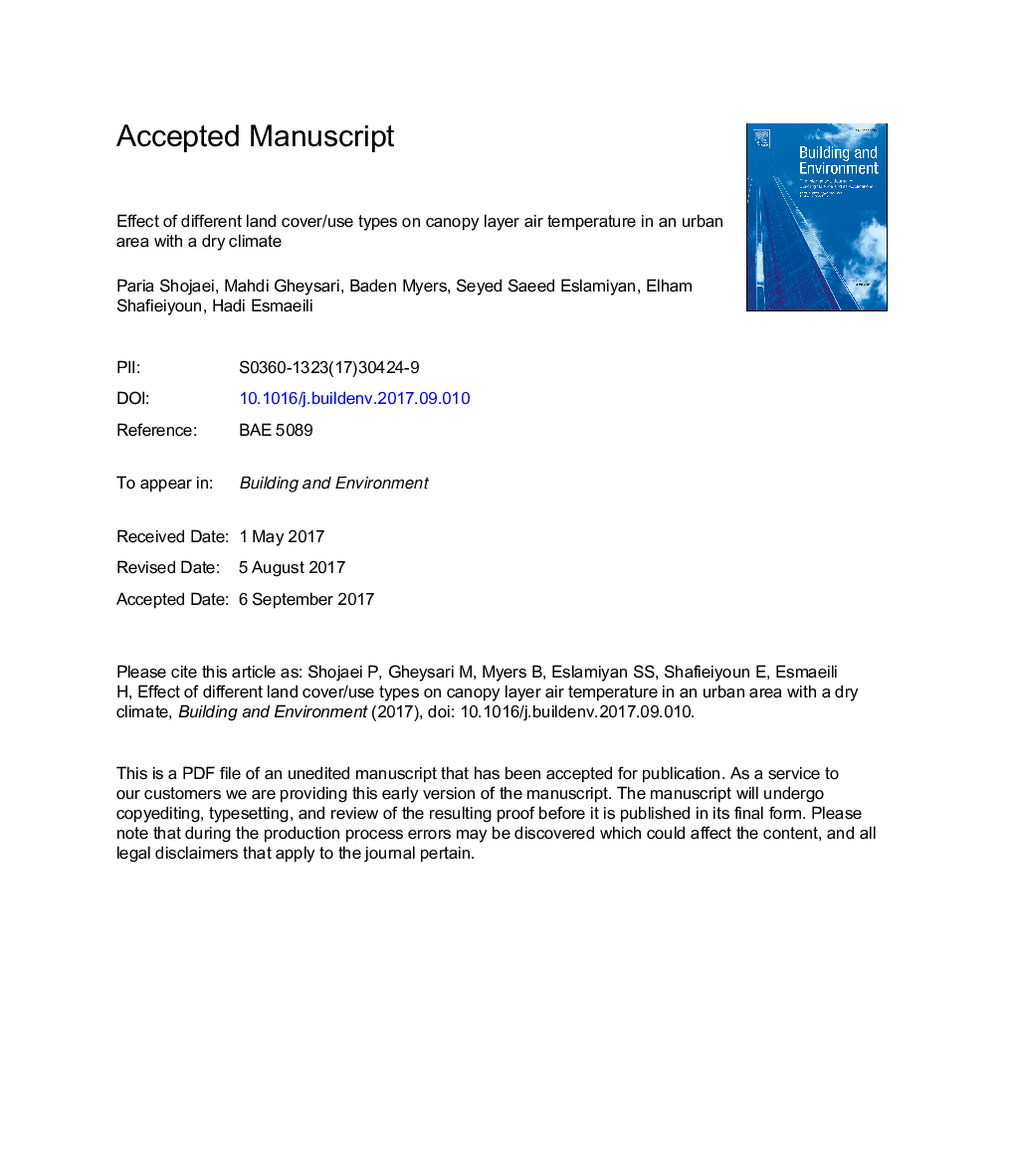| کد مقاله | کد نشریه | سال انتشار | مقاله انگلیسی | نسخه تمام متن |
|---|---|---|---|---|
| 6698643 | 1428367 | 2017 | 44 صفحه PDF | دانلود رایگان |
عنوان انگلیسی مقاله ISI
Effect of different land cover/use types on canopy layer air temperature in an urban area with a dry climate
ترجمه فارسی عنوان
تأثیر پوشش های مختلف زمین / نوع استفاده در دمای هوای لایه ی کانوپی در یک منطقه ی شهری با آب و هوای خشک
دانلود مقاله + سفارش ترجمه
دانلود مقاله ISI انگلیسی
رایگان برای ایرانیان
کلمات کلیدی
محیط زیست شهری، استفاده از زمین شهری / پوشش، جزیره سرد شهری، دمای هوای داخل شهری، محدوده دمای روزانه،
موضوعات مرتبط
مهندسی و علوم پایه
مهندسی انرژی
انرژی های تجدید پذیر، توسعه پایدار و محیط زیست
چکیده انگلیسی
Knowledge of the influence of land cover on air temperature in arid cities is scarce, yet essential for urban planners to select landscape design and management strategies which can improve livability and provide efficient landscape irrigation. The objectives of this study were to consider the effects of urban land use on air temperature changes in an arid city based on data collected in Isfahan, Iran at a local scale. This study reports a statistical analysis of temperature variation with respect to land use throughout the day and night. It is also the first study to report the effects of land cover on the time that daily minimum and maximum temperature occurs. The land use characteristics considered included green space, streets, buildings, population density and bare land. Air temperature was measured for 42-months at the canopy level of five intra urban sites and one reference site in a lightly developed suburban location. The temperature of all intra-urban sites was higher than the suburban reference site for a majority of observations during daytime throughout the year. The effect of land use on air temperature overnight was greater than daytime. The highest temperature difference occurred overnight in summer, with differences up to 12 °C when comparing an irrigated, vegetated site and the suburban site on an hourly basis. On average, the daily maximum temperature in urban areas occurred sooner than in the suburb in all seasons. The highest mean time difference was 78 min between the commercial-residential and suburban stations in summer.
ناشر
Database: Elsevier - ScienceDirect (ساینس دایرکت)
Journal: Building and Environment - Volume 125, 15 November 2017, Pages 451-463
Journal: Building and Environment - Volume 125, 15 November 2017, Pages 451-463
نویسندگان
Paria Shojaei, Mahdi Gheysari, Baden Myers, Saeid Eslamian, Elham Shafieiyoun, Hadi Esmaeili,
